Taijiang National Park (TNP) is the first wetland national park in Taiwan featuring 3 major characteristics including the culture and history of early Han Chinese settlers in Taiwan; wetland ecology; and the fishery and salt industry. Furthermore, the core values of protecting the homeland, local symbiosis, and country aesthetics are adopted. Every month, TNPH hosts different A Date With National Parks activities every month, inviting the public to get close to get closer to national parks. Particularly, the DIY activities featuring the unique characteristics of Taijiang have attracted many citizens. Furthermore, the limited number of spots (approximately 20 spots through online or on-site registration) is often snatched up in no time after the event is launched, demonstrating its huge appeal.
Unlike conventional DIY courses that place emphasis on the aesthetic presentation of the creation and convenience when sourcing the materials, TNP's DIY activities aim to incorporate the promotion of the core values of national park ecological conservation via the use of natural materials or recycled waste. In terms of design, they serve to highlight Taijiang's characteristics while taking into consideration practicality and the element of fun.
Some of them are interesting and yet informative DIY creations; whether it is product development or activity execution and instruction, national park volunteers are the true unsung heroes. Coming from all walks of life, they possess the knowledge, experience, and passion for national parks. The volunteers brainstormed with TNPH during the preparation stages to spark creative thinking, and after rounds of discussions and test runs, they also collected and arranged tools/materials by precutting them or filing off sharp edges, etc. The time-consuming and laborious preparation process ensures that the citizens can practice hand-eye coordination and experience completing exquisite DIY creations by using simple materials or recycled wastes under the safest environment. Meanwhile, the docent will also provide a lively narration of Taijiang's diverse ecology, species, culture, history, and industries. All the hard work is done in hopes of letting people of all ages become familiar with the national park's rich natural ecology, culture, history and industry amid a relaxing and playful ambiance.
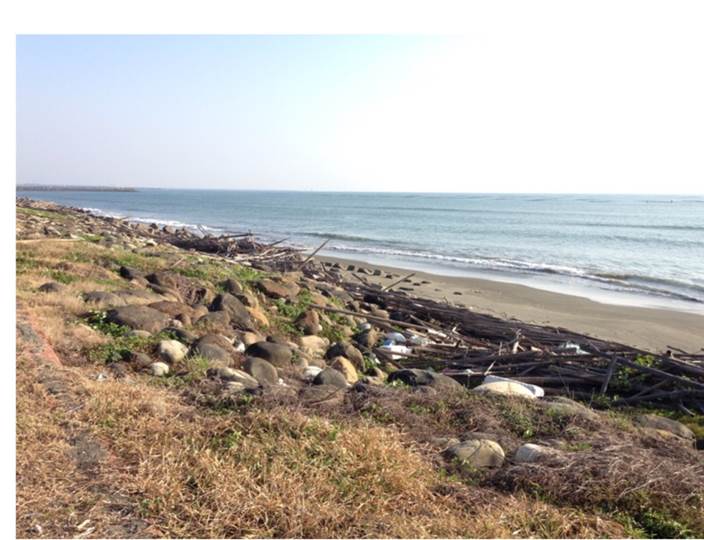
bandoned bamboos are often seen piled up along the west coast of Taiwan. These were originally floating oyster racks that have been discarded at will and allowed to drift in the ocean; not only do they negatively impact the coastal landscape but also cause harm to the marine environment. Consequently, national park volunteers have used these wastes to develop recycled waste DIY activities.
- Bamboo tube sound system
- Bamboo tube potted plant
- Bamboo cicada
Inviting the participants to scavenge for materials from nature to create practical everyday items during the DIY experience, thereby endowing abandoned bamboo oyster racks with new purpose!
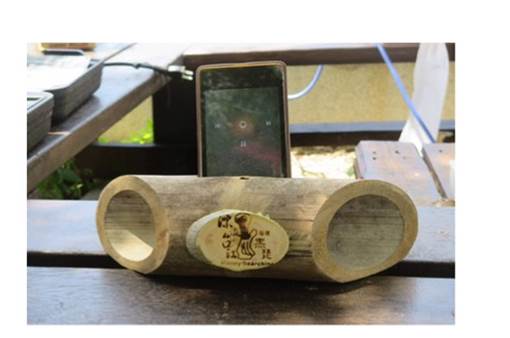
Using the hollow center of the bamboo tube that acts like the resonance chamber of musical instruments such as violins or guitars, the principle of resonance enables the amplification of sound, turning the bamboo tube into a natural smartphone speaker.
The bamboo tube speaker does not need to be plugged into power, nor does it require batteries, and it also involves the repurposing of abandoned industrial waste in the Taijiang region.
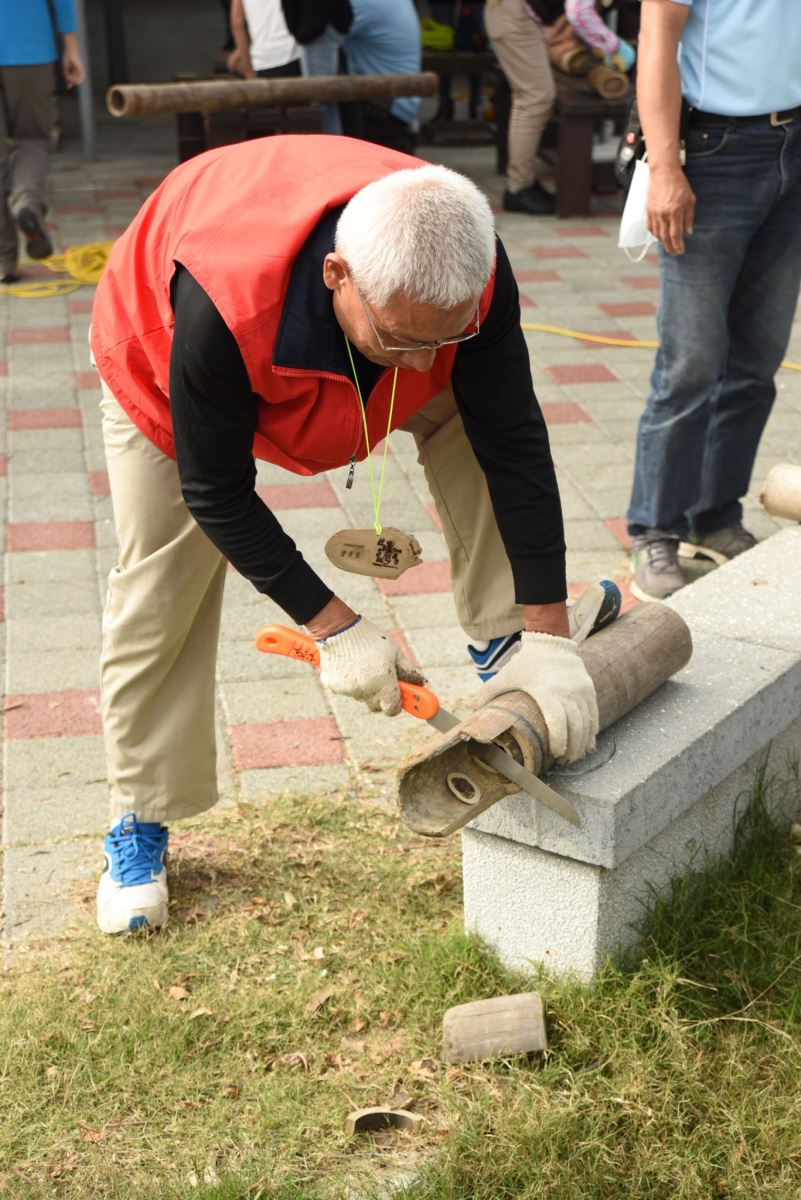
- Bamboo speaker production: Cut open the waste bamboo tube with a hand saw.
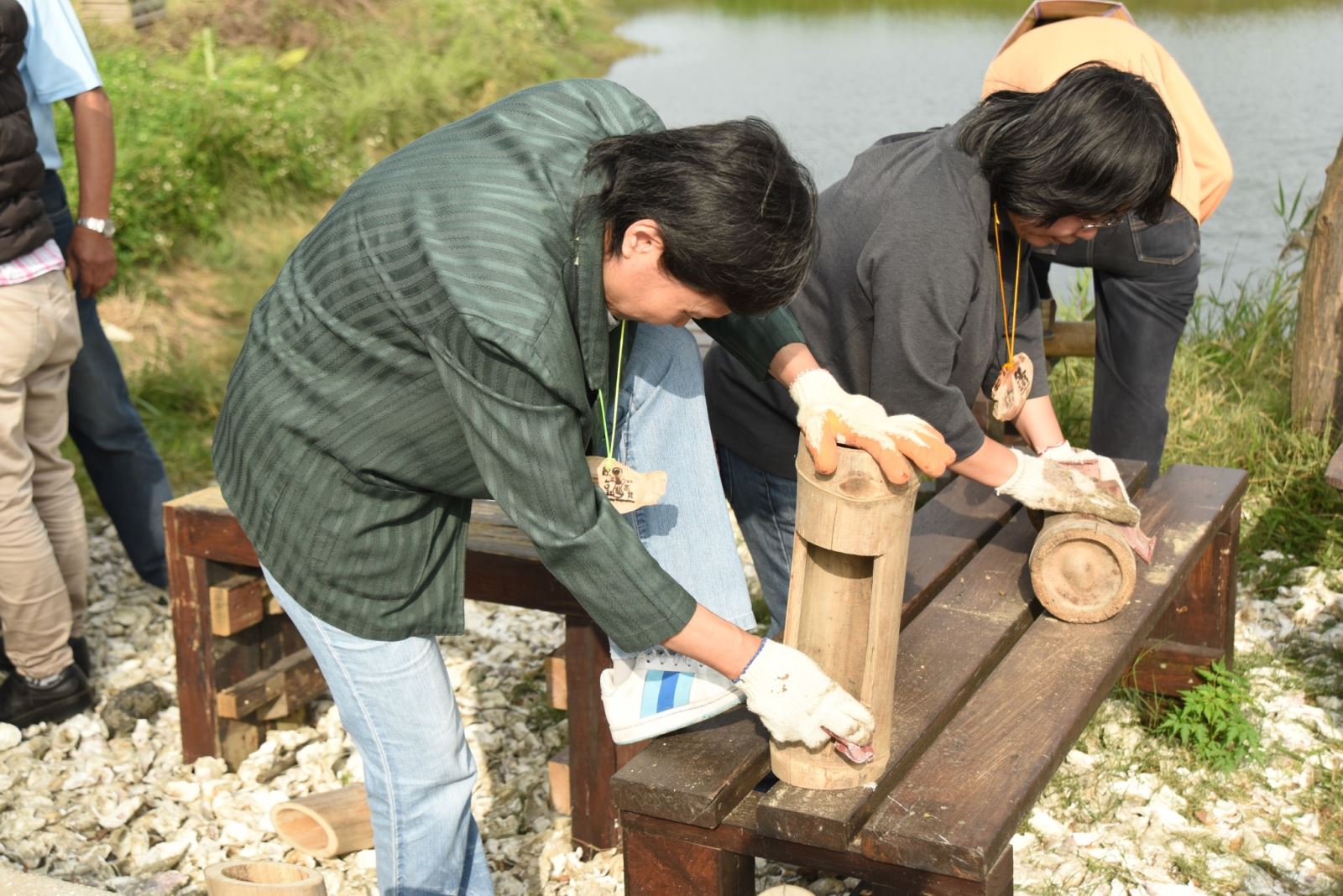
- Bamboo speaker production: Grind the bamboo tube speaker with sandpaper.
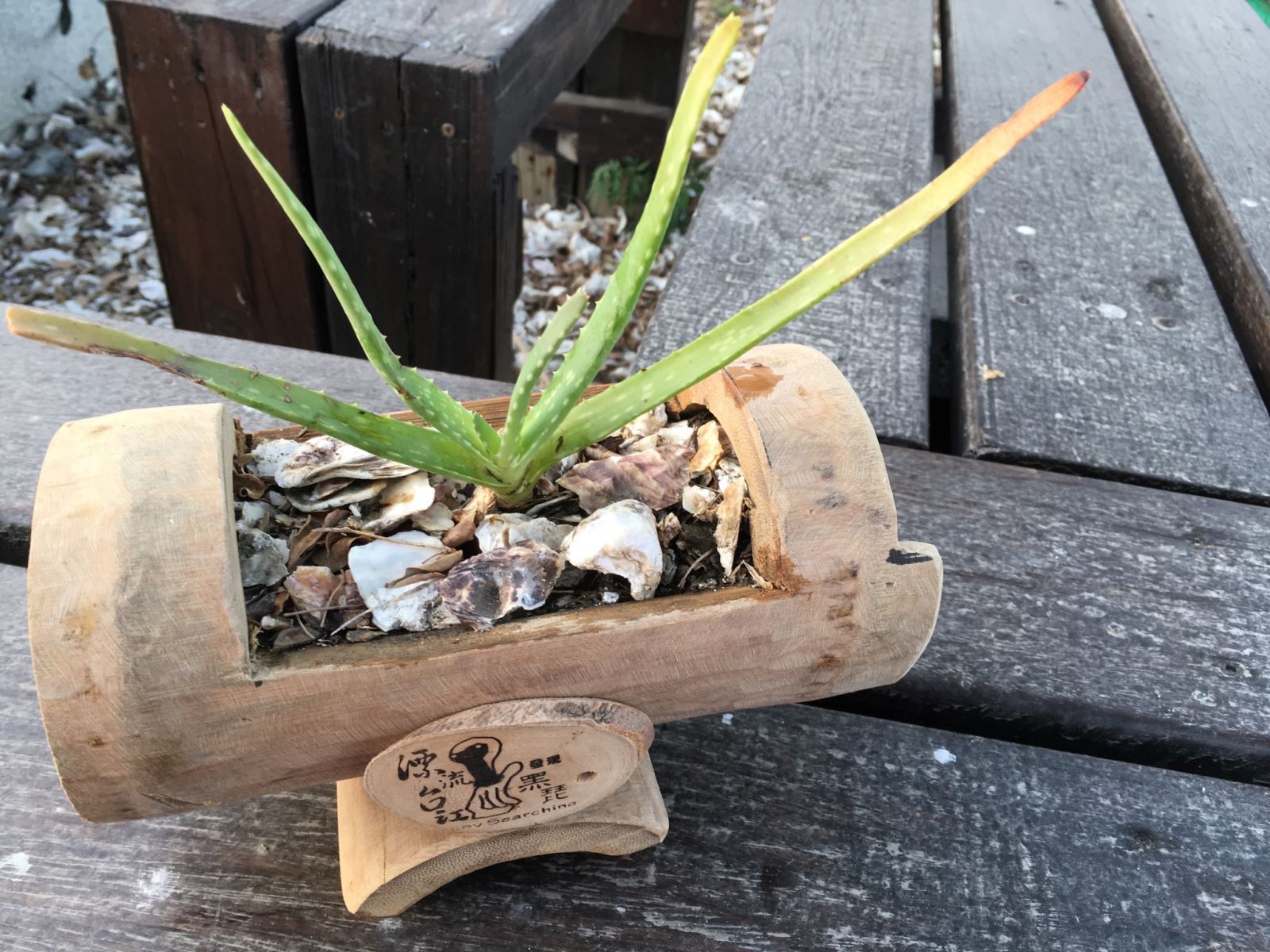
- Bamboo tube potted plant: Drill holes on the waste bamboo tubes to make small potted plants.
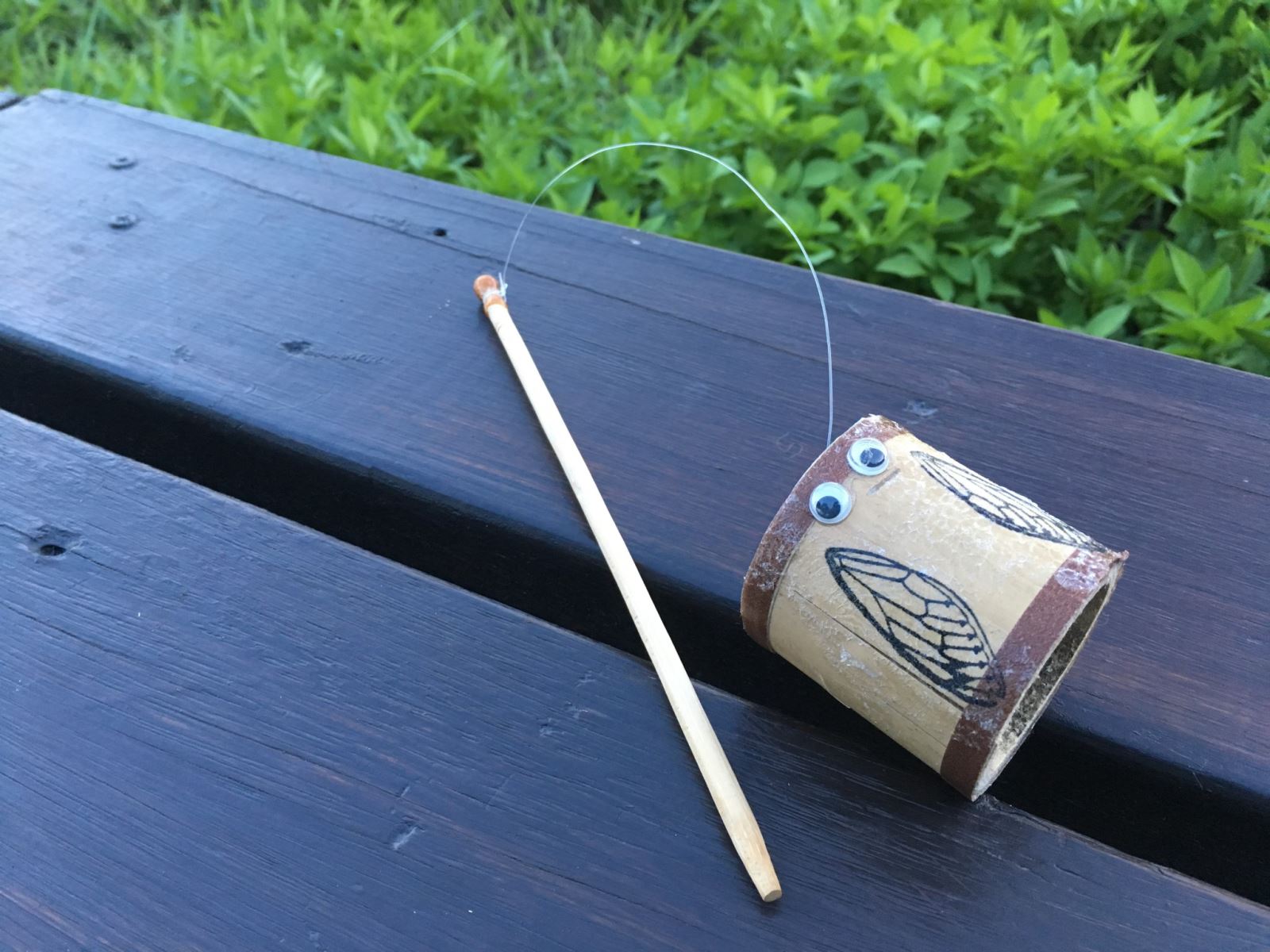
Also applying the principle of sound resonance, resonance membrane is attached to the bamboo tube, so that when the fishing line rubs against the rosin on the small wooden rod, sound will travel from the rapidly vibrating line to the resonance membrane on the bamboo cicada, in turn vibrating the air inside the bamboo tube to generate resonance and amplify the sound. The pitch of the sound is determined by the width and length of the bamboo tube.
The DIY creation harks back to nostalgic children's toys from the yesteryear, where resources were a scarce commodity but also involves the repurposing of abandoned industrial waste in the Taijiang region. Furthermore, the bamboo cicada allows the citizens to get acquainted with the common summer insect in the Taijiang region - Taiwanosemia hoppoensis.
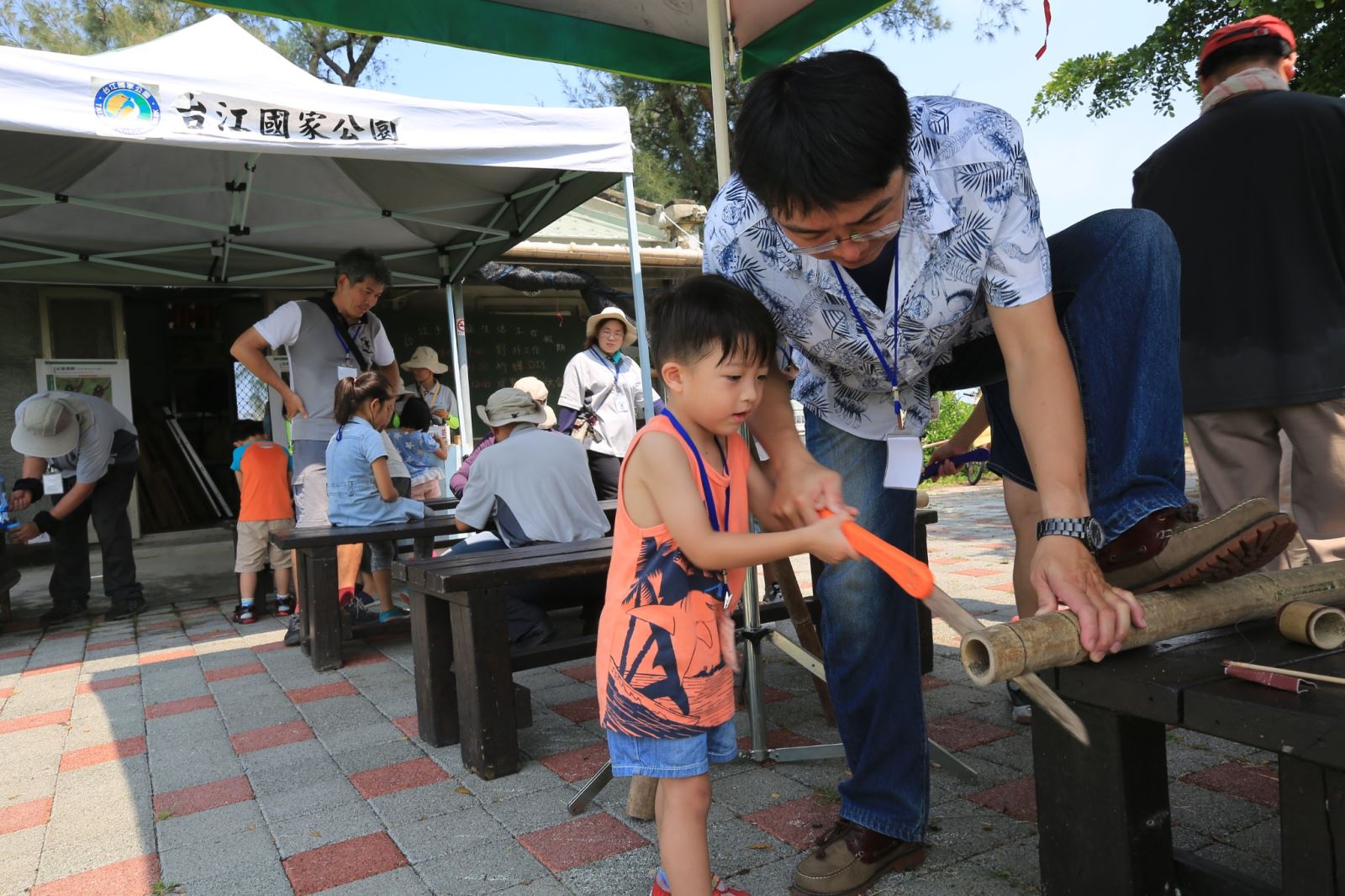
- Bamboo cicada production: Cut open the waste bamboo tube with a hand saw.
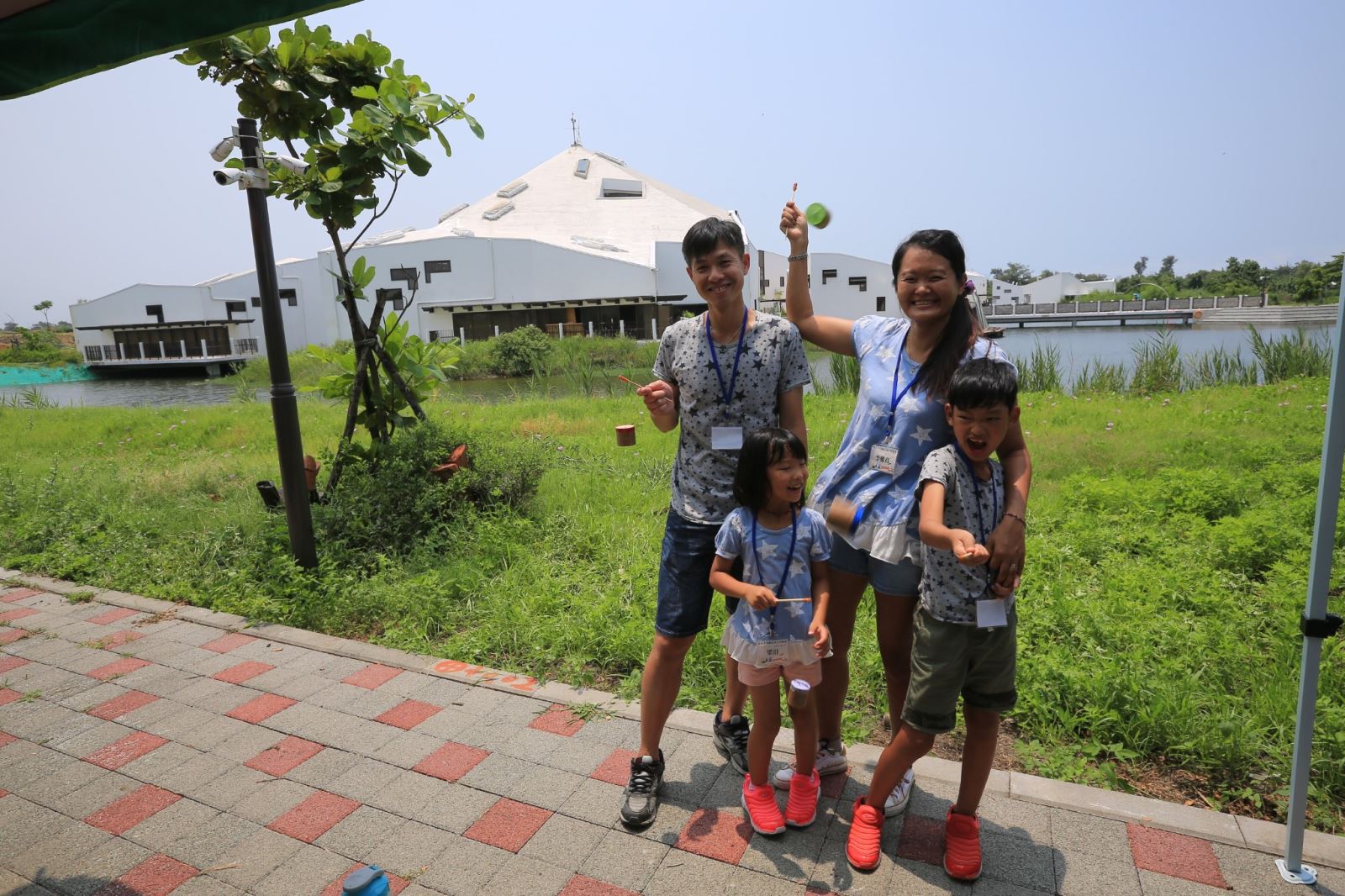
- Families participating in the event cheerfully playing with the bamboo cicadas they have created.
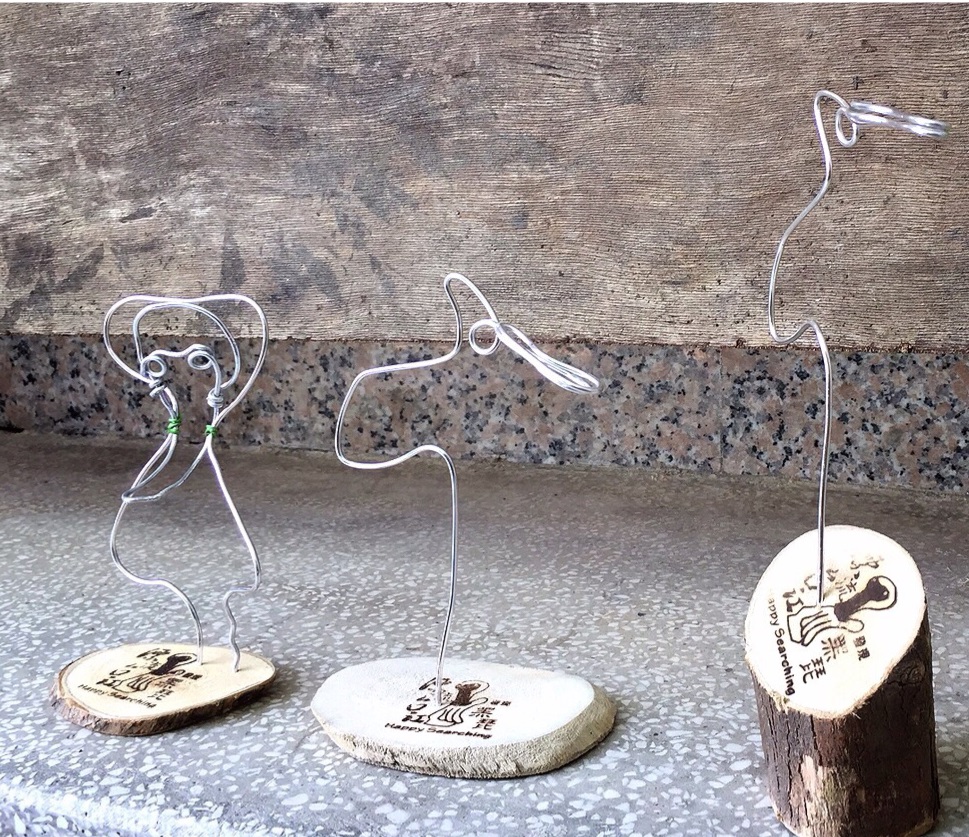
- Memo clip DIY: Using white popinac, an exotic plant species removed from the park, as well as trimmed branches from other trees and plants, wood blocks and wood chips are created. These are branded and embellished with aluminum wires to produce functional stationery items for the desk.
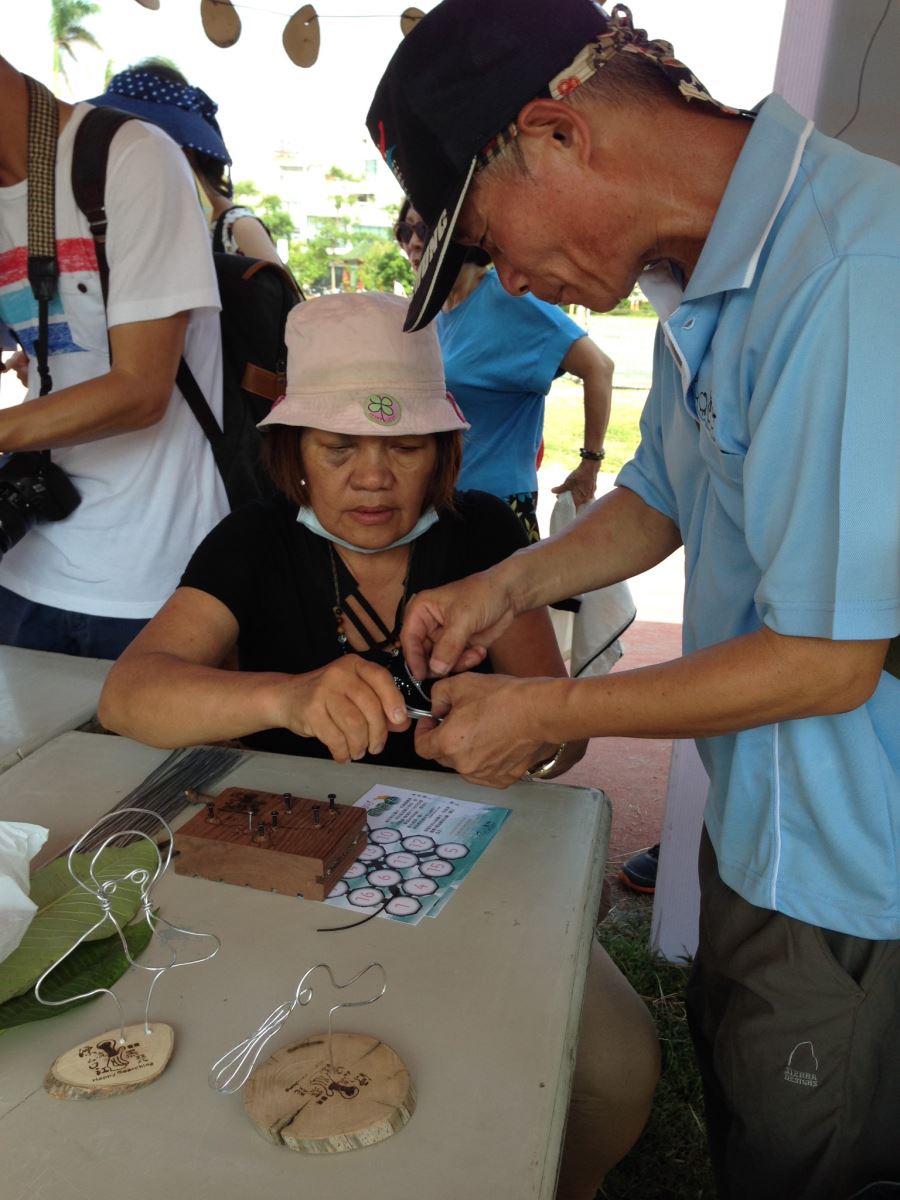
- Desktop memo clip DIY: Prefabricate a template for the participants to create the black-faced spoonbill motif using aluminum wires.
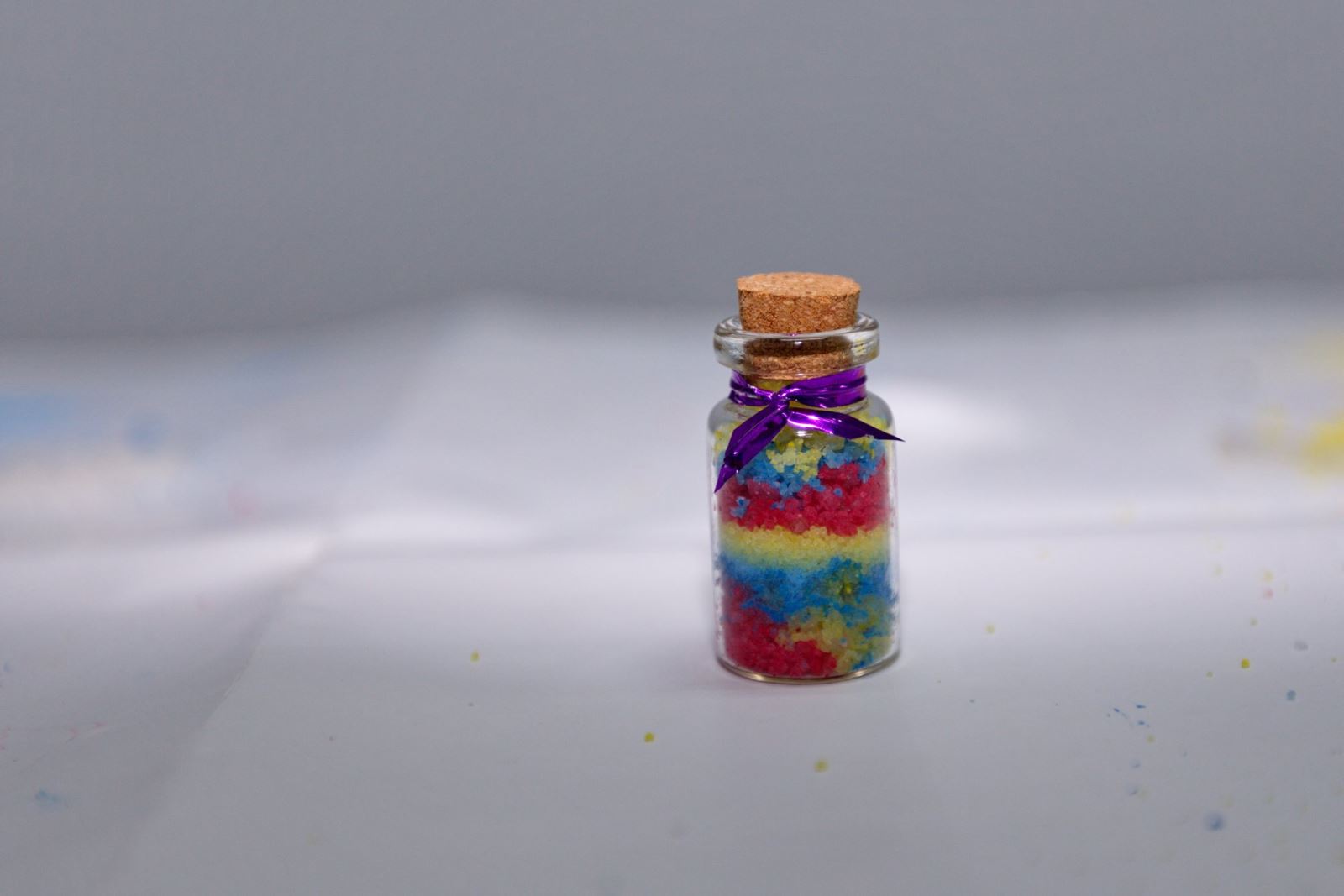
- Colored salt bottle DIY: Pour in coarse salt and table salt in different layers to create the colored salt bottle. The activity will be complemented by an introduction of Taijiang's salt industry.
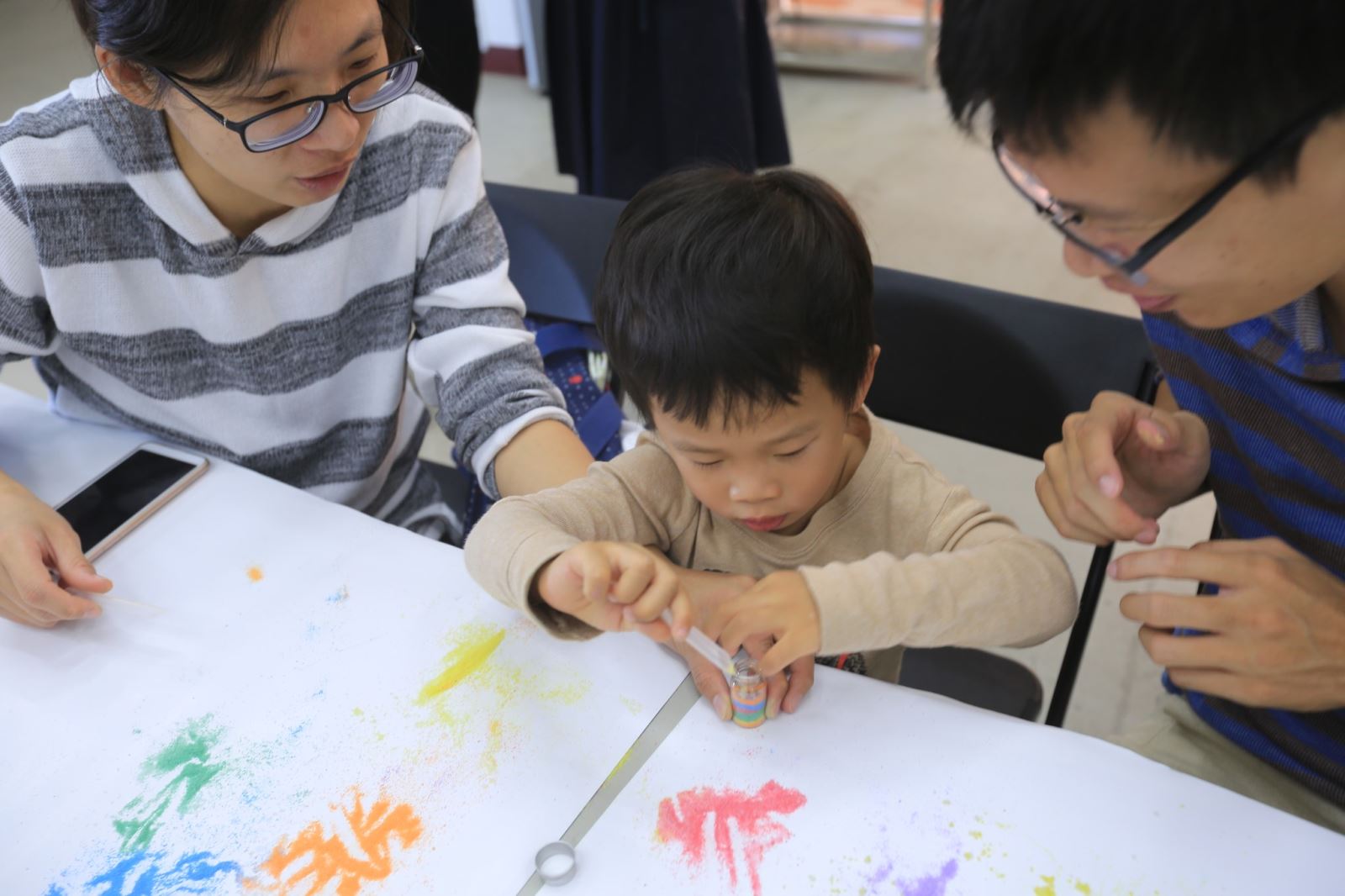
 Colored salt bottle DIY: Color coarse salt and table salt using chalk powders and pour them in different layers to create the colored salt bottle.
Colored salt bottle DIY: Color coarse salt and table salt using chalk powders and pour them in different layers to create the colored salt bottle.
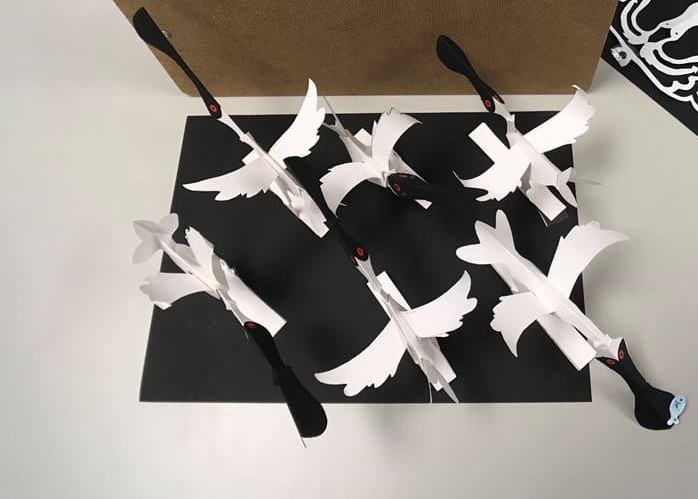
- 3D papercut DIY: Using simple materials to create the lifelike black-faced spoonbill with its wings spread open and ready to soar into the sky. The activity will be complemented by an introduction of black-faced spoonbill's behavior and ecological features.
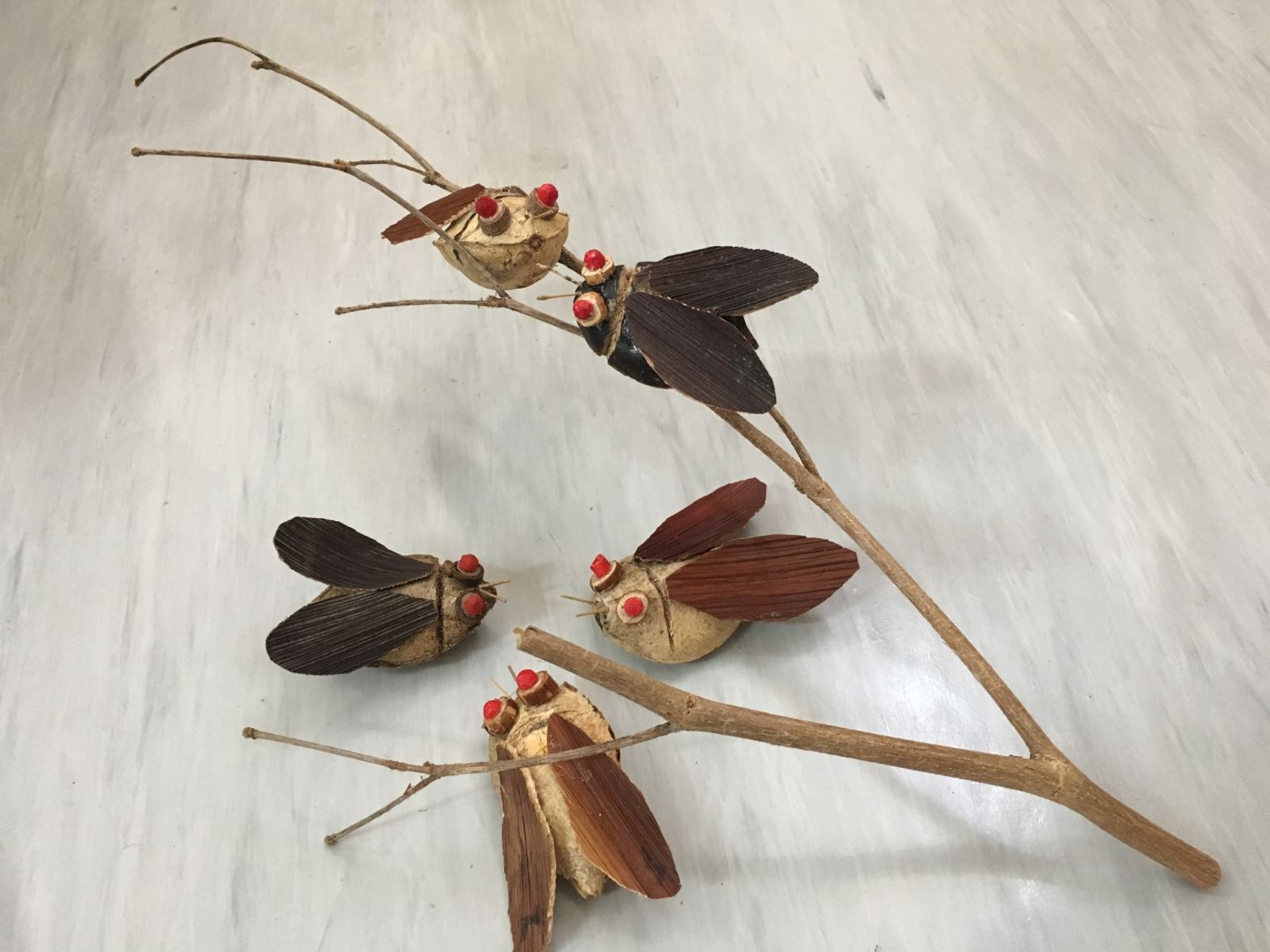
- Taiwanosemia hoppoensis seed ornament DIY: This unique ornament is created to celebrate the Taiwanosemia hoppoensis, an endemic species of Taiwan and a common insect seen in Taijiang during the summer.
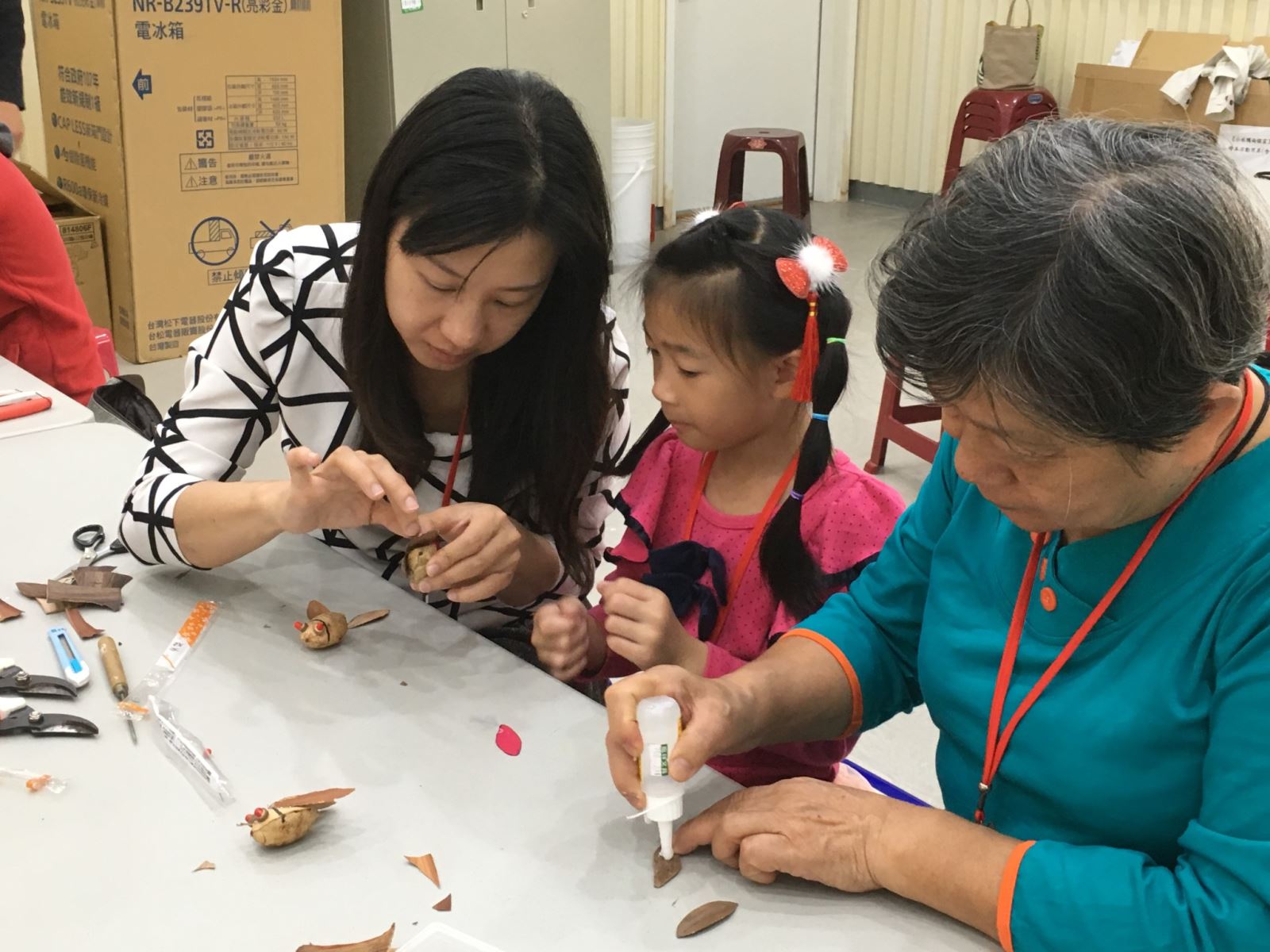
- Taiwanosemia hoppoensis seed ornament DIY: Plant seeds, leaves, and twigs gathered from nature are glued meticulously to create the shape of Taiwanosemia hoppoensis.
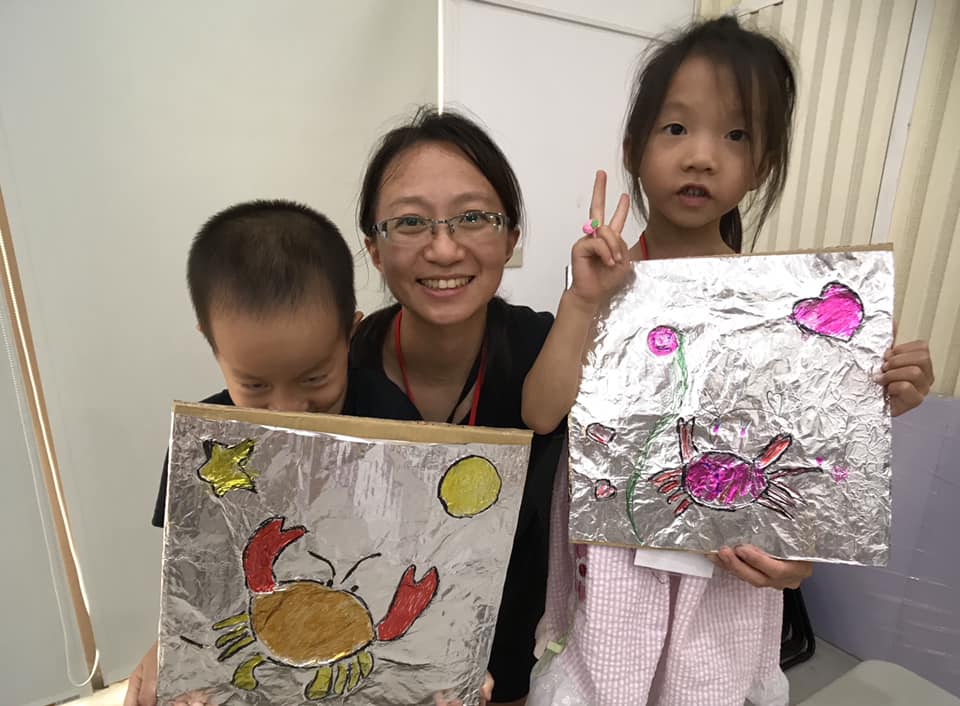
- Aluminum foil painting: Waste cardboard boxes are collected and cut into cardboards to create aluminum foil paintings.
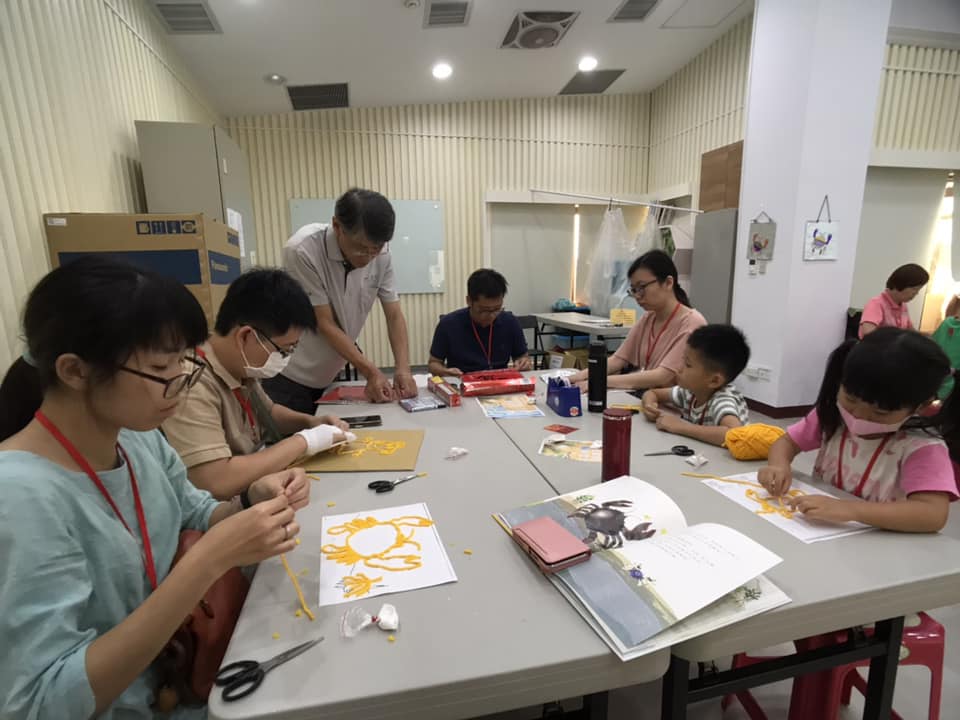
- Aluminum foil painting: Yarn is used to create motifs unique to Taijiang, which is then covered in aluminum foil and colored.
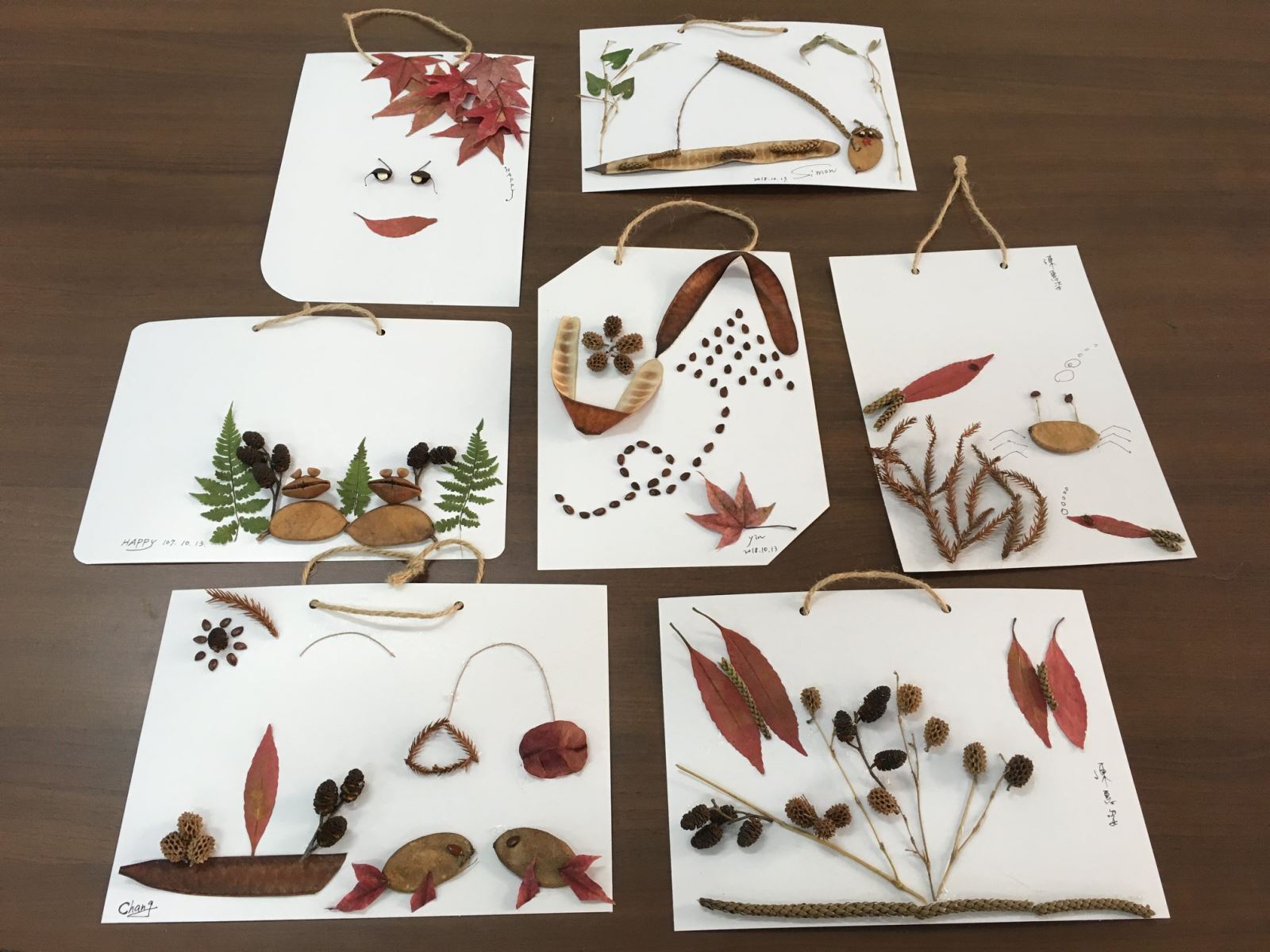
- Taijiang impression natural object DIY:
Fallen leaves, twigs, and dry beefwood seeds are gathered and glued to the cardboard in order to create unique impressionist paintings of Taijiang.
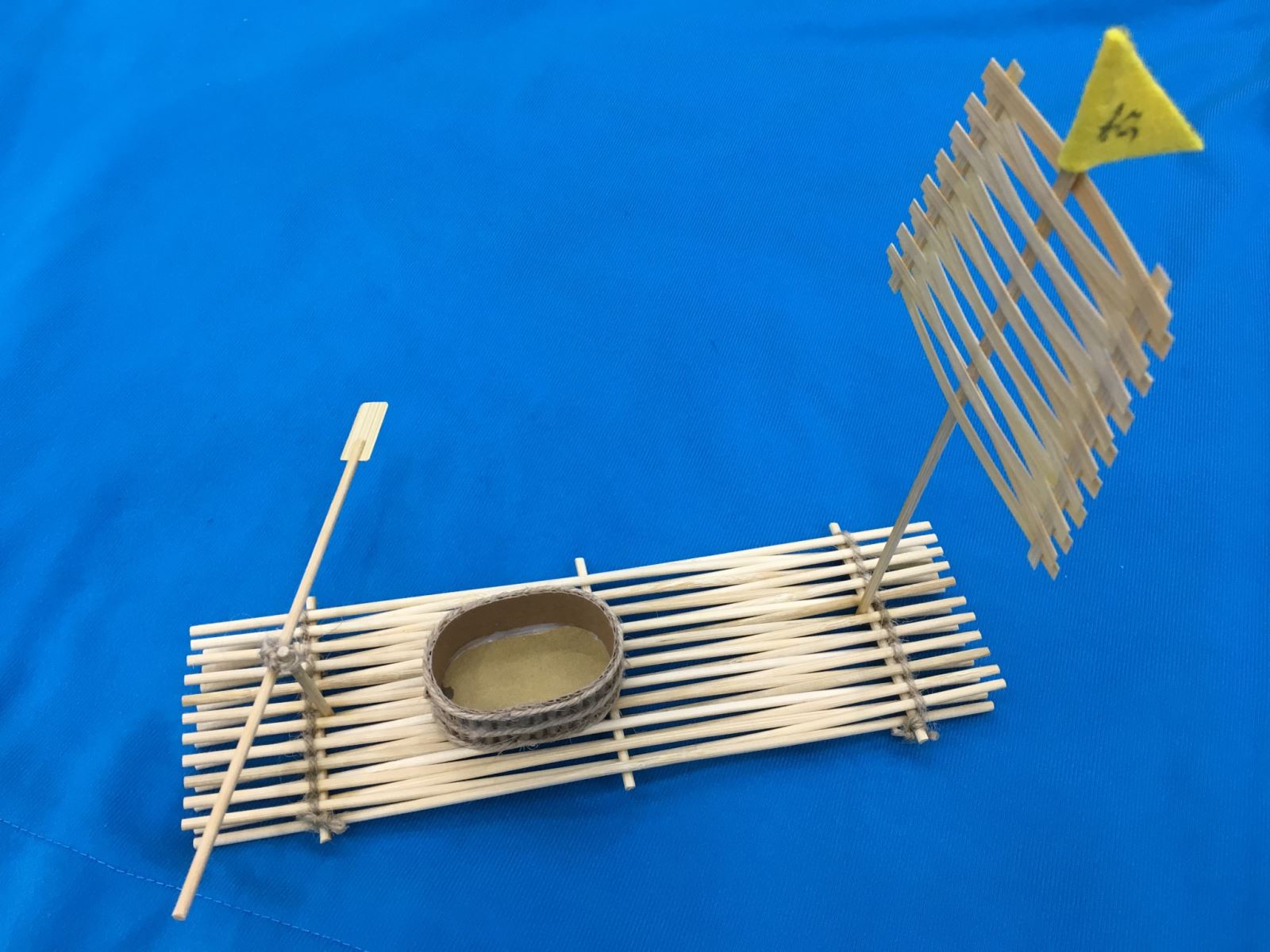
- Small hand-woven bamboo raft DIY: The docent introduces the history of Taijiang while the boat cruises down the river as if taking the passengers back in time to the heyday of Taijiang Inland Sea, which was bristling with sailboats and merchants.
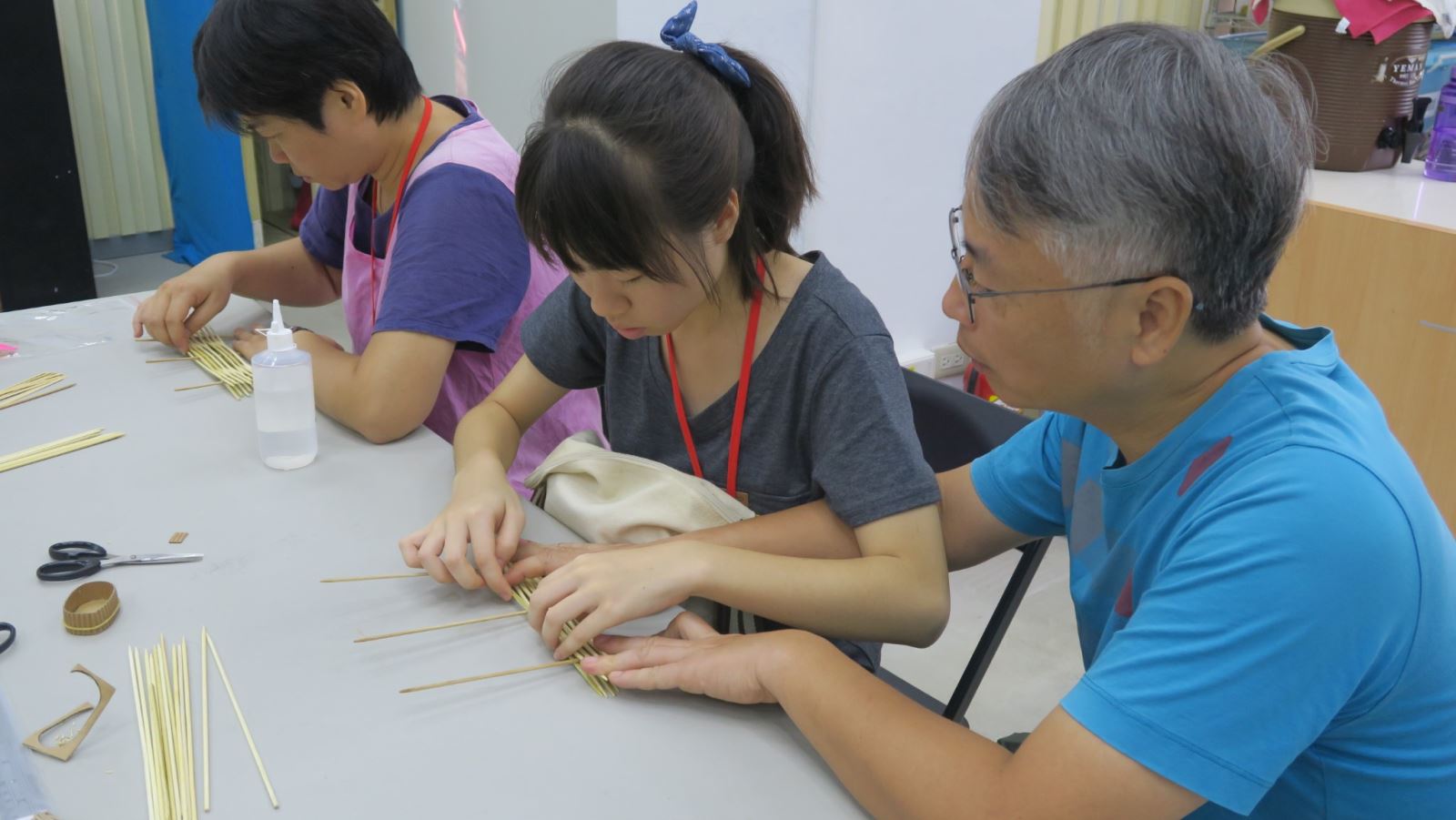
- Small hand-woven bamboo raft DIY: Bamboo skewer sticks and bamboo strips are woven into little bamboo rafts.
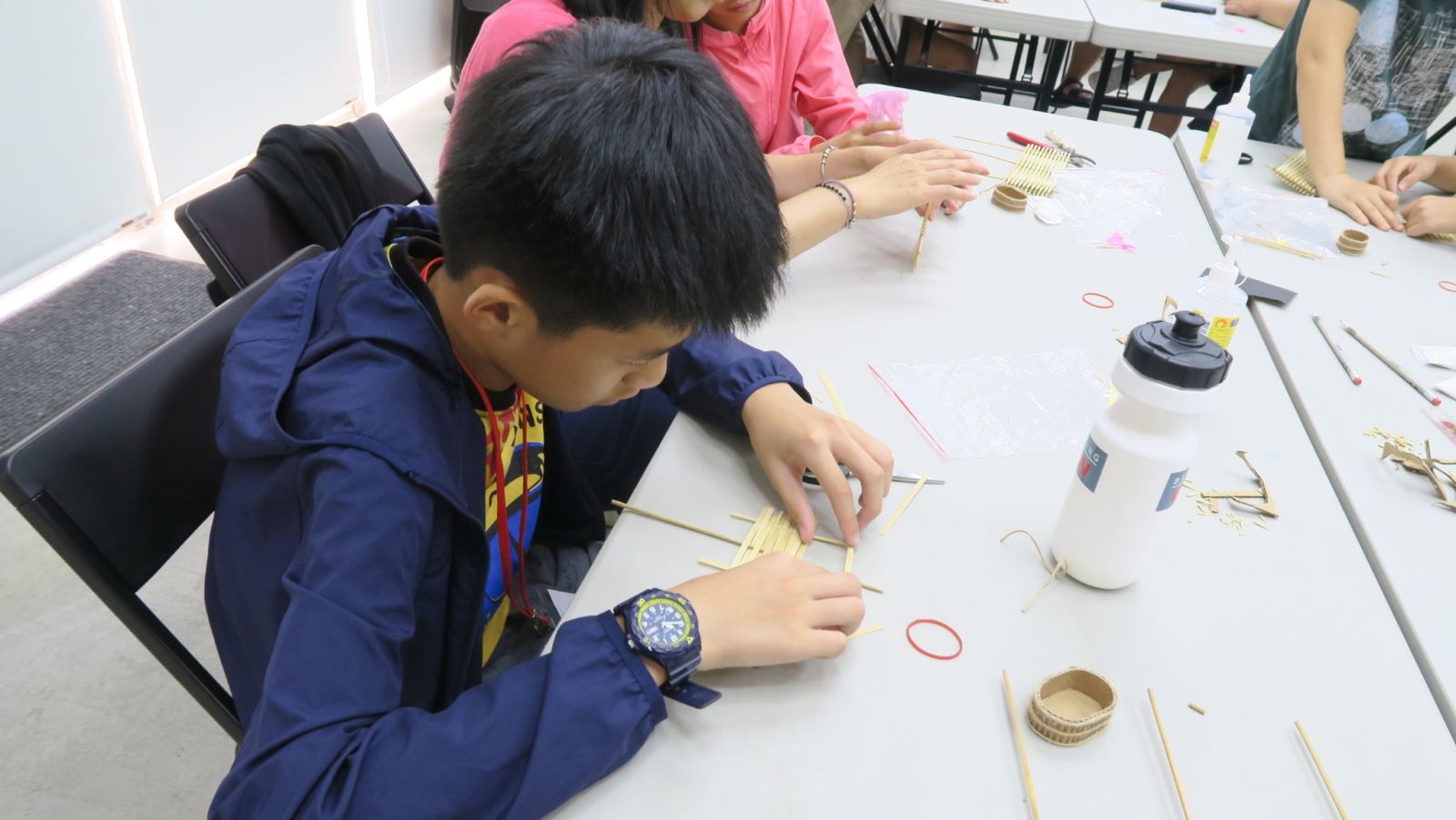
- Small hand-woven bamboo raft DIY: Bamboo skewer sticks and bamboo strips are woven into little bamboo rafts.
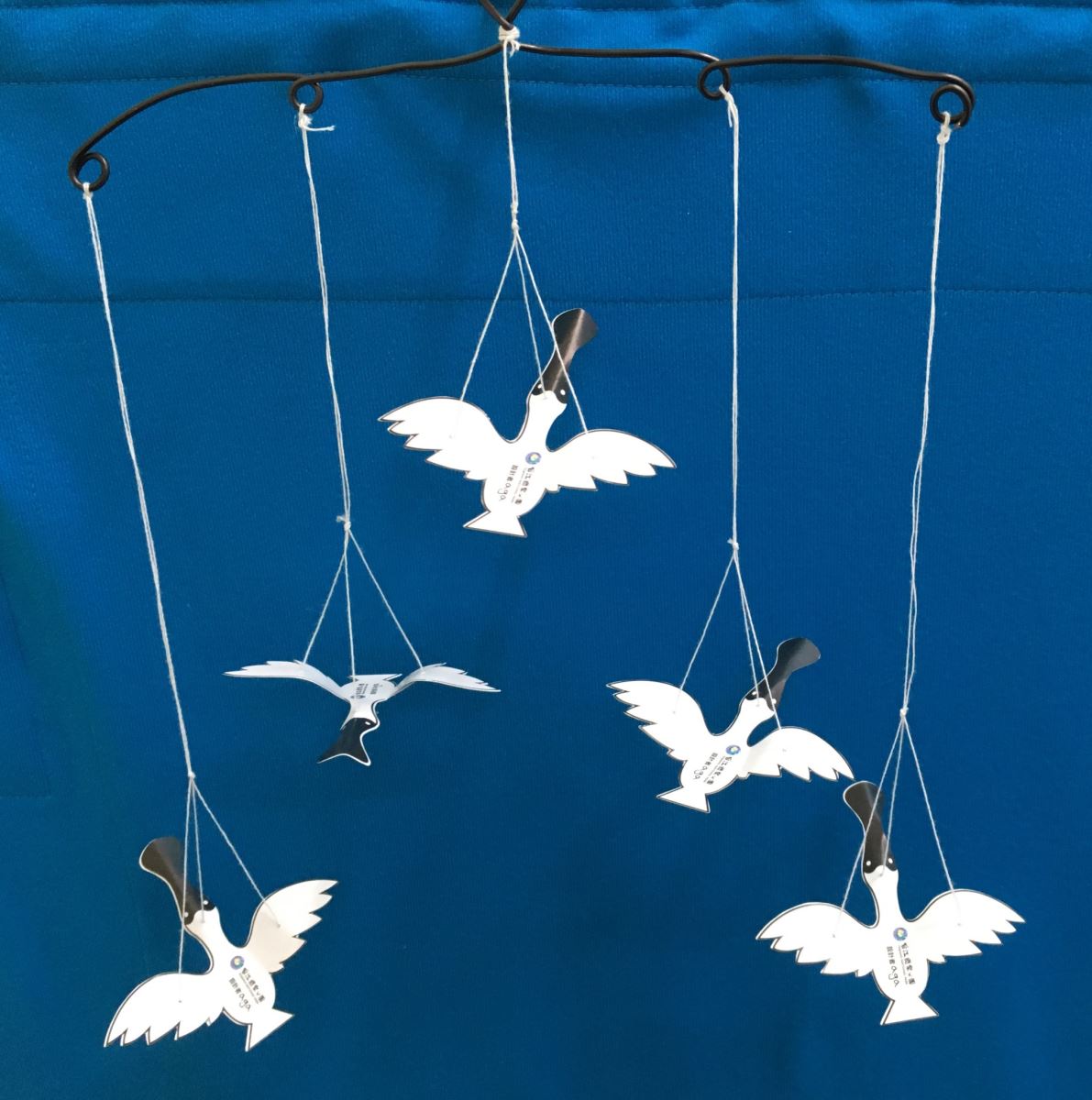
- Rotating hanging ornament DIY: Simple little paper car is threaded with needle and complemented by the docent's introduction of the black-faced spoonbill's behavior as a migratory bird and how a flock tends to fly in formation.
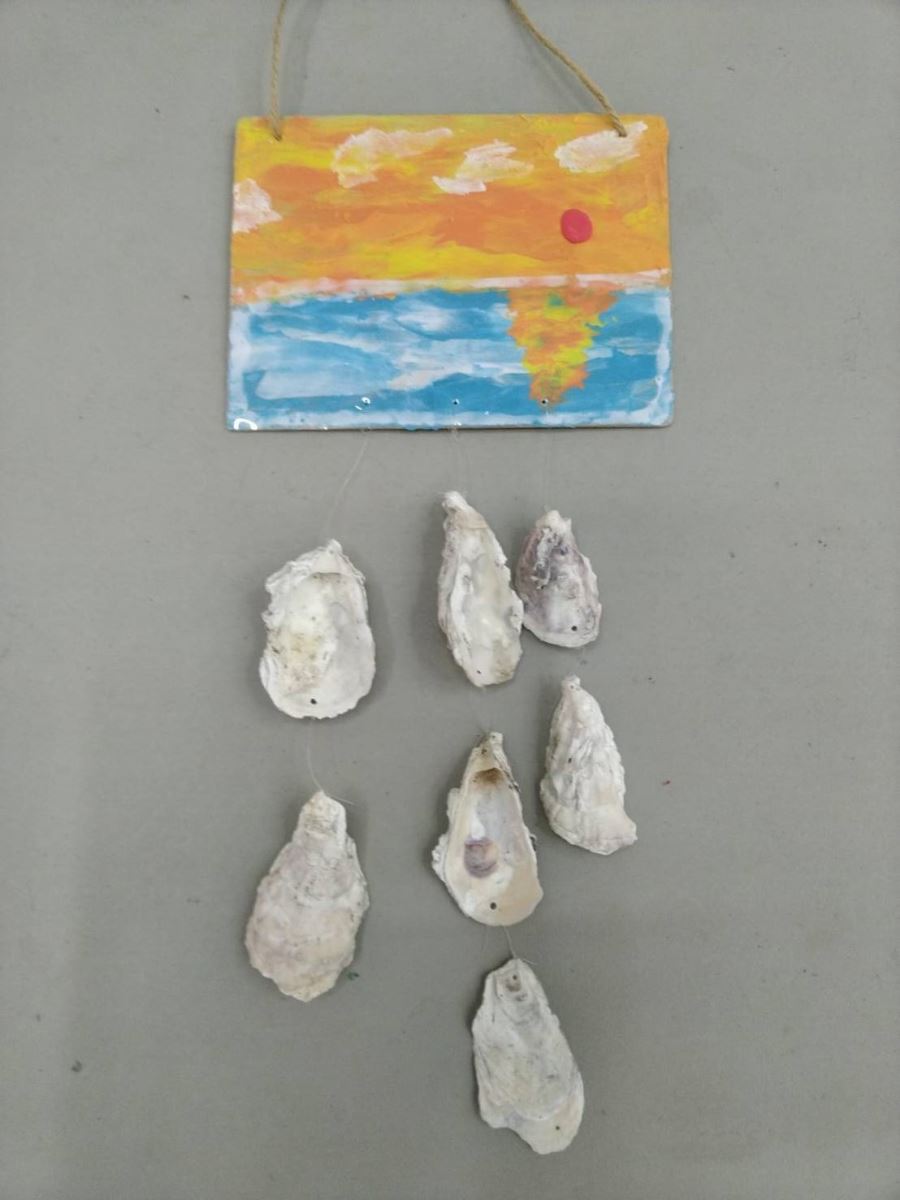
- Colorful oyster wind chime DIY: Oyster shells, industrial waste of Taijiang, are strung together to create the wind chime. The body of the wind chime is made from air dry clay, depicting the serene landscape of Qigu Lagoon in Taijiang under the splendid sunset. The activity is complemented by the docent's introduction of Taijiang's oyster farming industry.
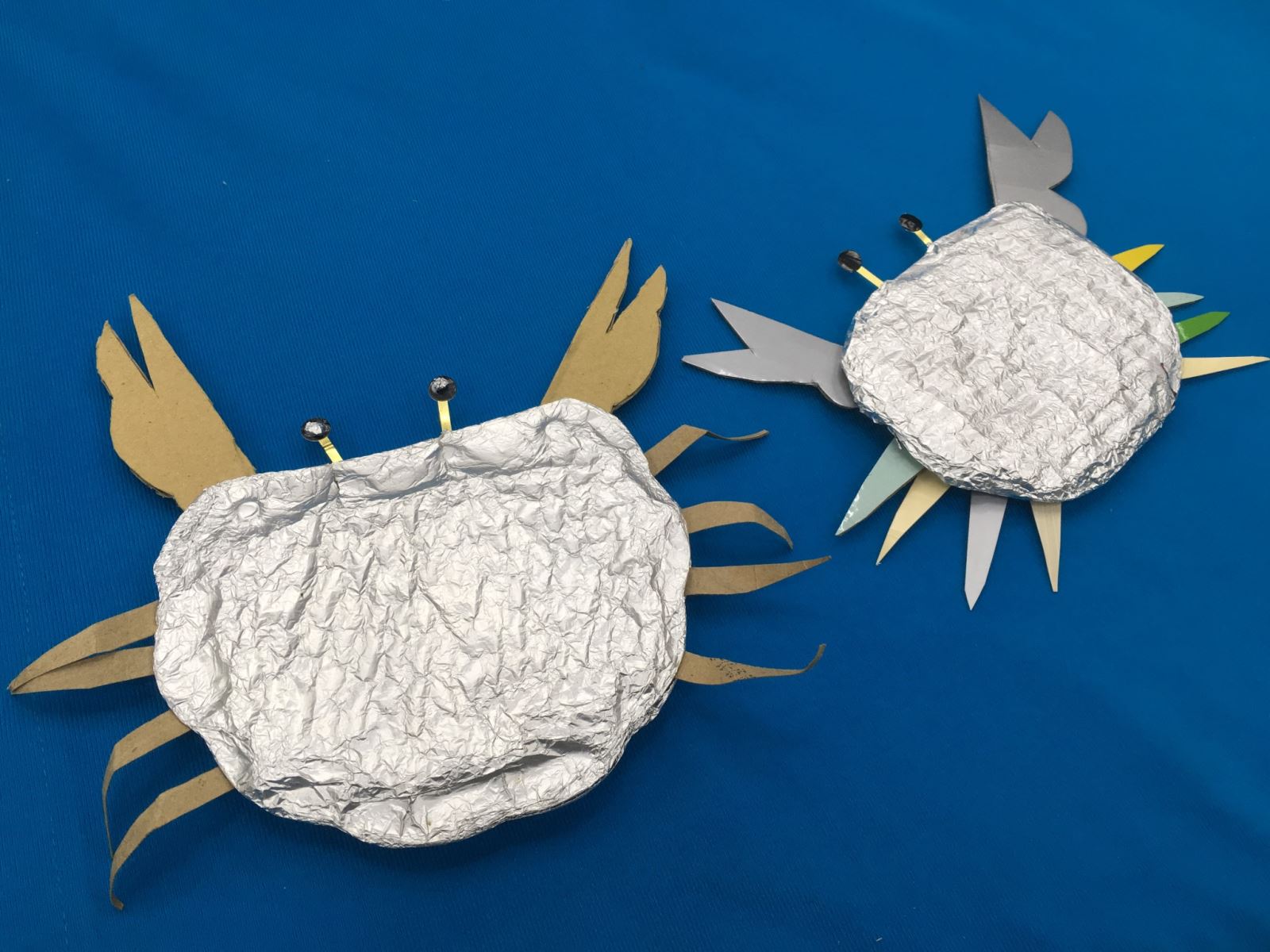
- Little paper dolls with movable joints DIY: Waste cardboard boxes are collected and cut into cardboards to sketch the iconic motif of Taijiang - fiddler crab, where brads are used to create 8 movable legs of the fiddler crab and its unique large crab claw. The activity is complemented by the docent's introduction of Taijiang's crabs.